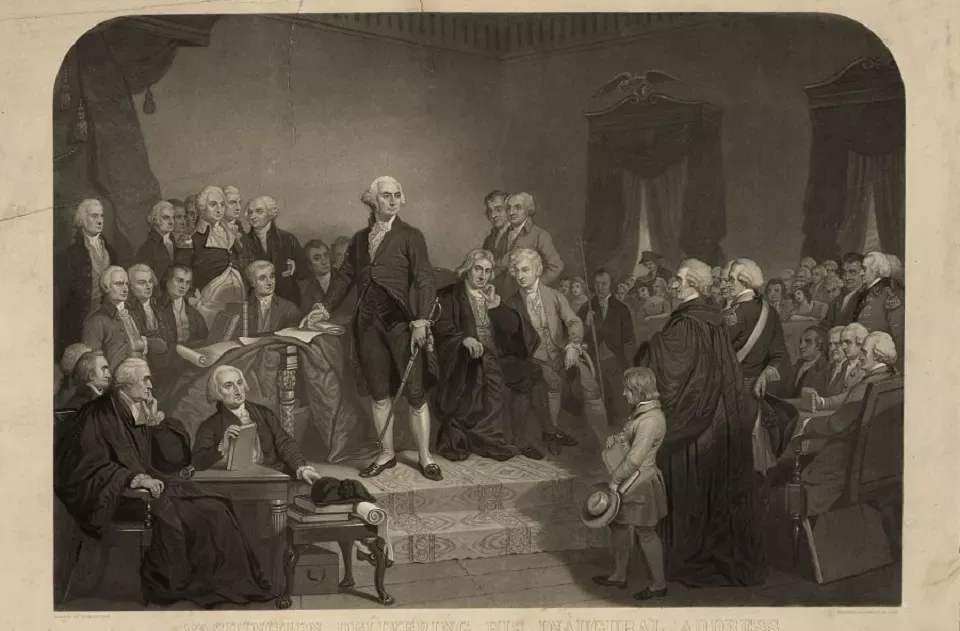Afterwards
Washington faced General Howe eight times in the 15 battles his army fought. Of those engagements with Howe, he lost six times. Luckily, the tide turned, and the Americans won the war. The Treaty of Paris was signed in 1783. In May of 1787, Washington called for the (Constitutional) Convention. The US Constitution was completed on September 17, 1787.
During the debate about the Executive Branch, the Antifederalists were worried that the President would be an elected monarch who would develop small groups of secret plotters that would go against the government. They worried that the pardon power and the veto power would be abused. Federalists argued that the President would only enforce laws and conduct foreign policy. Unlike the King, the President would have the other two branches, Judicial and Legislative, as checks on his power. Although Washington desired to retire, he ran for President because he felt it was his duty to serve his country.
 An 1849 print by Henry Sadd & John Neale, based on a painting by T. H. Matteson, depicting George Washington's first inauguration on April 30, 1789. Library of Congress
An 1849 print by Henry Sadd & John Neale, based on a painting by T. H. Matteson, depicting George Washington's first inauguration on April 30, 1789. Library of Congress
During his two terms, Washington had the trust and admiration of the American people. They knew that they could trust him not to take advantage of the power of the president. He worked to be a president for all, which at the time meant white men. He was mindful of the principles of republican virtue. Self-sacrifice, decorum, self-improvement, and leadership were what he strived for. Our expectations of presidents today, that they should be held to higher standards and that the office carries a certain level of respect and prestige, began with Washington’s careful creation of the position. Washington also left his mark on the political process by choosing a cabinet, a group of carefully selected people who would help him make decisions.
Washington retired from the presidency after two terms, setting a precedence for all future presidents until FDR. Washington was worried about the power the president might accrue if they served more than two terms. He knew that Americans needed to learn how to elect, transition, and inaugurate a new president for our country to be successful. Washington wanted this process to be planned out and not haphazard. After FDR, the 22nd Amendment was added, giving the office of the president a two-term limit.
Although our country admires and reveres Washington, we can't help but remind ourselves that he did have enslaved people. He pursued those who had escaped instead of letting them go free. During Washington's time, his wealth and lifestyle depended on enslaved people. Although he didn't free his enslaved people while alive, by the end of his life, he knew the institution was wrong and freed his slaves after his death. When his will was made public, it sent a shockwave through the country. By freeing his enslaved people, he made a statement about the morality of slavery, albeit a little too late.
History may not always be pretty, but it has made us who we are today. History reminds us of not just what we have done well but also what mistakes we've made so we can correct them. Looking at all sides of history gives us a 360-degree view of our lives. As I would tell my students, you need to look at all sides of the story and listen to all points of view. Somewhere in all of it is the truth. You have to have an open mind, do your own analysis, listen, and come to a logical conclusion.

